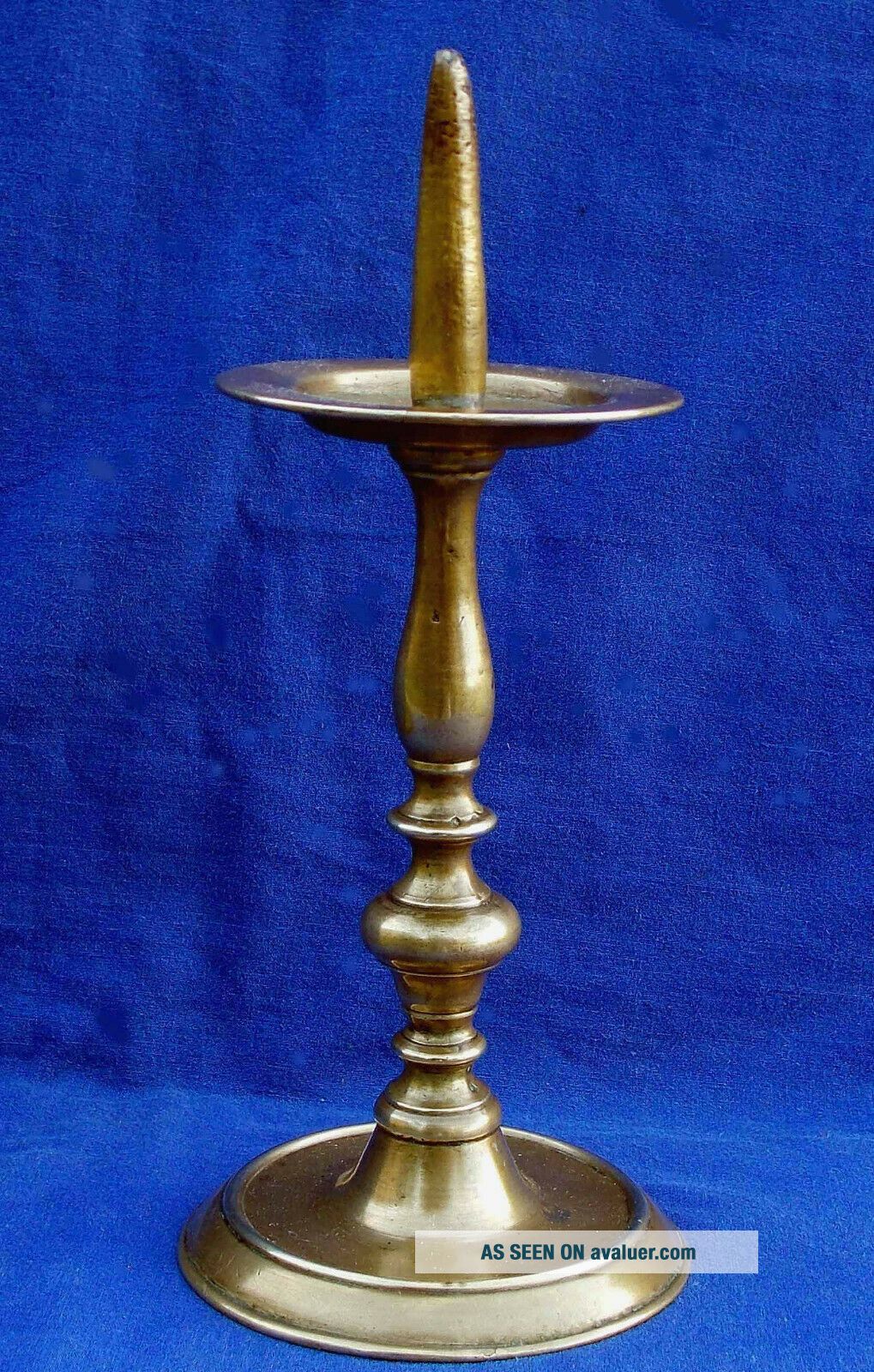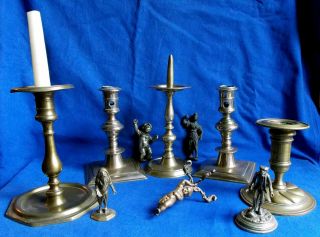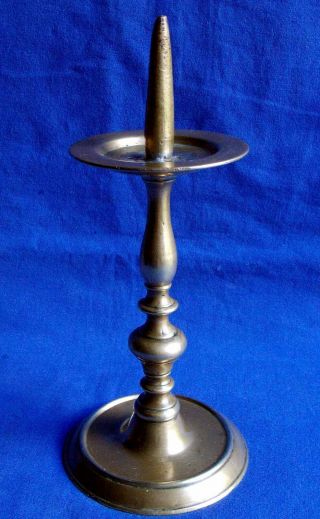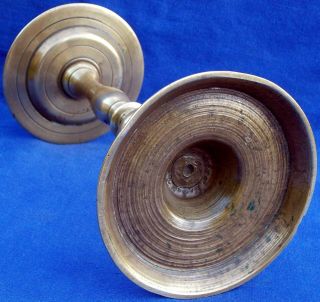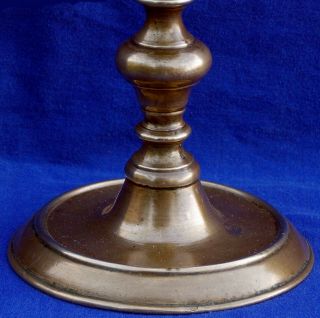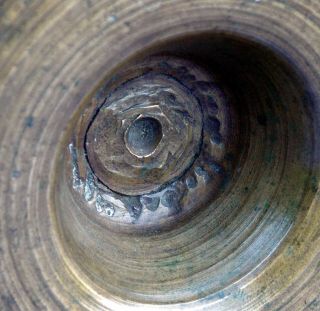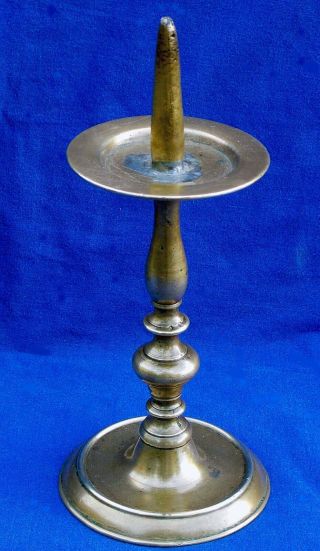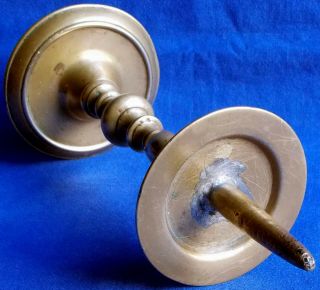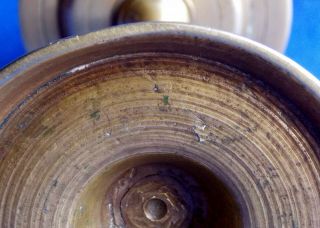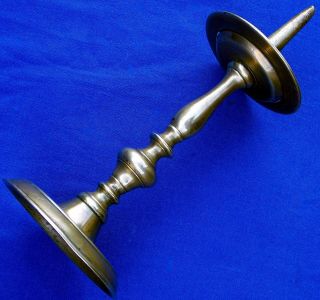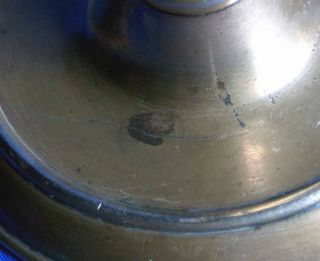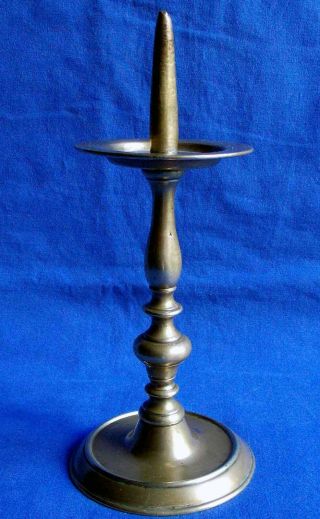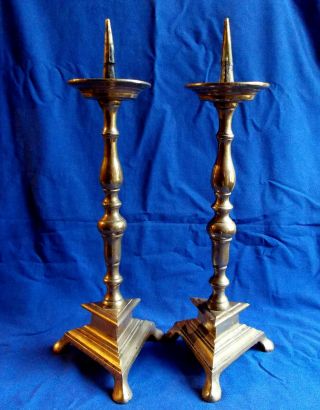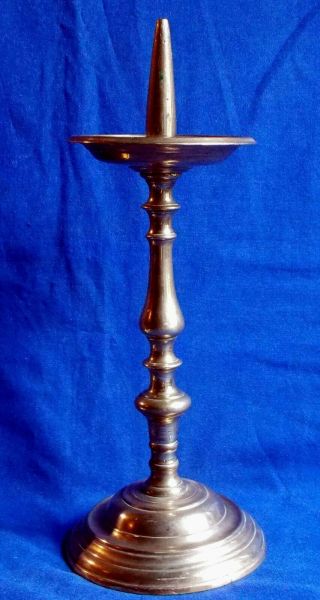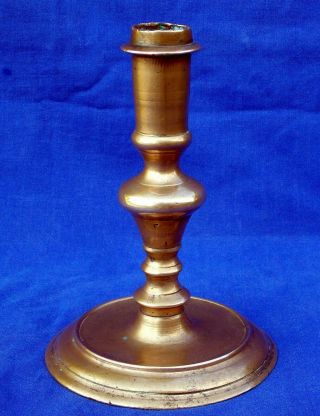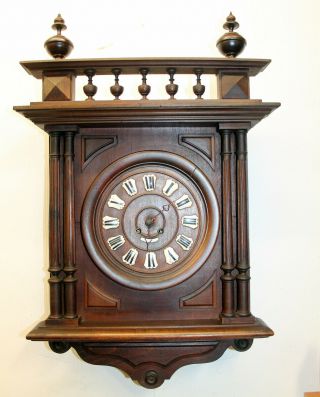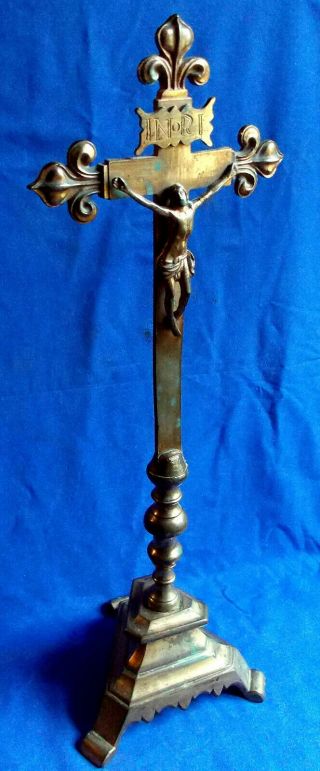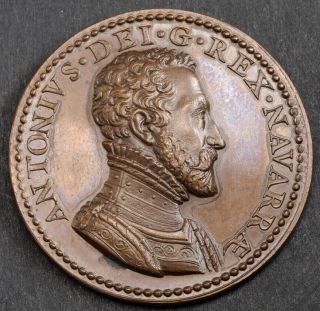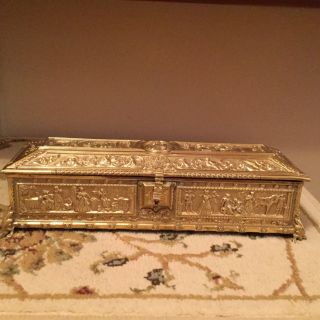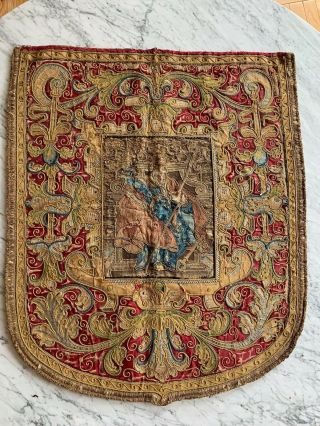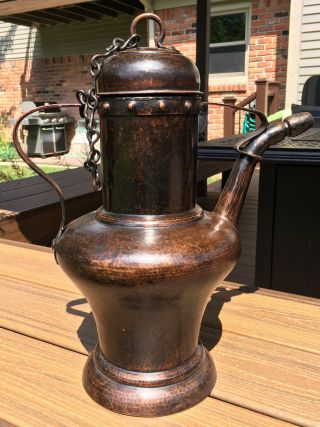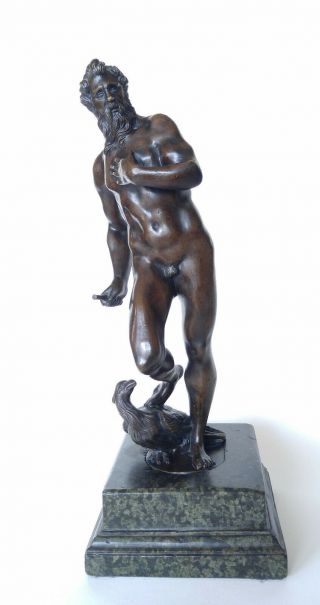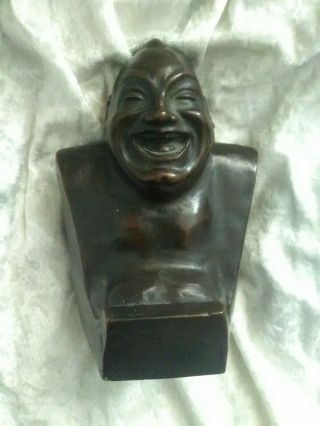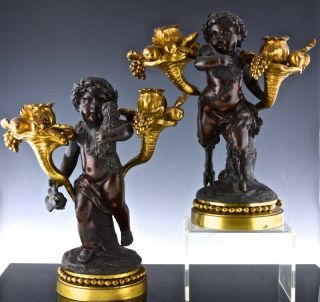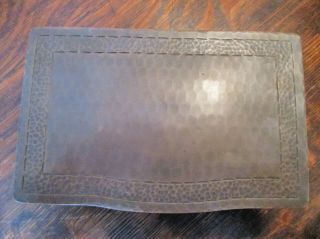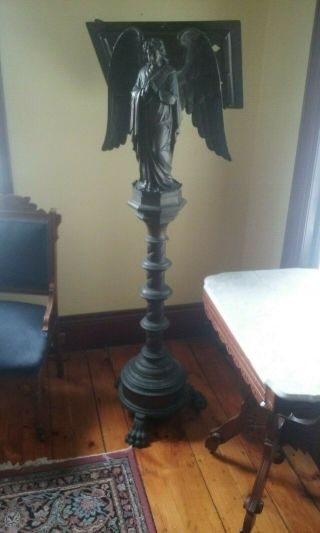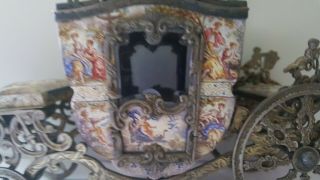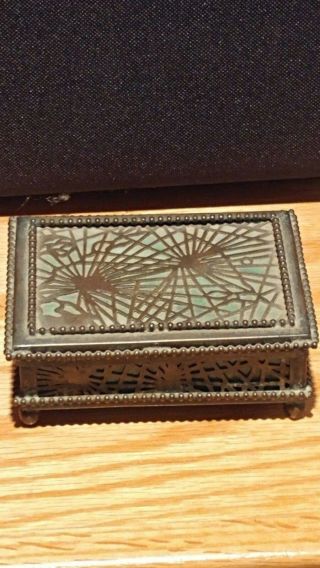16th Century French Renaissance Henri II Bronze Pricket Candlestick Circa 1560
Item History & Price
and our Intellectual Properties attorneys in Leeds & Paris. Please readall my terms of sale carefully!Elly BurdettThis is in France.Pieces in the group photo are for scale.You are only buying the featuredcandlestick.Free collection by appt. is possible:my collections & some of Elly’s many new arrivals can be viewed. Please note: For those not familiar with my eBay store, you are dealing with 2different people in England & France. I’m an antiques dealer, & exhibitat UK antiques shows; my associate in France is an expat American historian ofEuropean Decorative Arts & guest museum curator, with 44 years of advancedexperience. Sincerely, ET Burdett Dear friends & clients: We have more Fine Arts & Antiques than we canpossibly begin to keep up with, as to eBay – at least 4, 000 period pieces.Group photos will give you a slight idea of the depth of mycollections, and Elly's inventory - keep watching this page. R. Josef The antiques trade is rife withperpetuated errors, and moving to France 25+ years ago meant that I had tounlearn more than a few. One of the most annoying and widespread is that all pricket candlesticks (and larger mid-drips) areecclesiastical. This has been thoroughly disproven, from early inventories, woodcuts and paintings, and in-situresearch – I own several non-ecclesiastical French wrought iron pricket beamcandlesticks. The “ecclesiastical assumption” also totally ignores the fact of the enormous size of theRenaissance and later Continental architecture of the wealthy merchant classand aristocracy across Europe – the larger early secular pricket or mid-dripcandlesticks (of which we have owned dozens - andhave more on hand) were often for use in truly enormous rooms, and on furniture thatwas proportionally massive.My reference library on earlyContinental metalwork & lighting is about as good as it gets – there areperhaps half a dozen books I’m still searching for, but by and large it’s verycomprehensive. Even so, I don’t know of a single volume in any language thathas even begun to correctly tackle the very complex history of either mid-dripsocket candlesticks, or secular pricket candlesticks. Elly has sold far inexcess of 100; I’ve handled manymore, and currently have 25 or so lurking about my house. This was justacquired from a collector/dealer in central France – based on the appearance ofthe form in Holland, Germany and France, I know that the design was popular inthe period, and was made in several countries. Very fine examples of FrenchRenaissance pricket candlesticks are difficult to buy for Elly for resale, butacquiring entire collections offsets this. I’ve seen others with the same formof base in France more often than in any other country – and the round foot ofthis has an extremely close affinity with French Henri II period (circa 1550)whale oil lamps in both bronze and pewter – I have several in my lightingcollection. The only definitive way to get to the bottom oforigins is by sampling a very largenumber of early Continental pieces using XRF technology (which is somethingI’ve been doing for 8 years).Aesthetically, this is one of myfavorite forms of French pricket candlesticks; the proportions, and thecrispness of the multi-knopped bladed and acorn baluster shaft are excellent –and the condition is nearly pristine. As is often the case, the only Englishlanguage point of reference that is useful is Old Domestic base-Metal Candlesticks (pub. 1978) by Ronald Michaelis – which is still the best technicalreference on base-metal lighting or brass. Michaelis’ work is genericallysuperior; in the 1970’s, he was theonly author to get it right, as to the attribution of Nuremberg candlesticks – and, correctly question the time constraints placed on Heemskerks by others.However, his dating of Franco-Flemish candlesticks is not always accurate, andothers bear erroneous attributions – the 3 candlesticks in Figure 170, page116, are in fact all French, late 16th century, and not 1stquarter, 18th century.The Appendix on page 137 of Michaeliscontains a somewhat useful, but hopelessly out-dated and rudimentarymetallurgical chart on base-metal candlesticks.More recent published references using XRF analysis are equally unreliable, dueto errors in attributions of candlesticks, or woefully inadequate numbers ofpieces sampled. As with any other truly accurate and scientific survey, a verywide range and large number of examples is an absolute necessity.Michaelis does devote a brief chapter tothe pricket form, but did not have as much experience as I have withspecifically Continental (and especially French) origins of pricket or mid-dripcandlesticks; he does not always provide accurate commentaries. In this case, his book is quite useful, in that it illustrates a pricket candlestick with similarturnings; Figure 19 on Page 35 – but as mentioned, the simple round foot has more incommon with Henri II period lamps (and French pillar candlesticks). The construction is superb (see photos 4, 5 & 6), and the peening and turning under the foot are as solid as the day it was made.I neglected to get a close-up photo, but there is a small (1/4”-long) nick onthe edge of the foot rim that is almost certainly the result of an erodedcasting defect. It’s hard to be sure if they were under-fills, or minorerosions due to the presence of impurities in the metal (iron or lead lumps aresometimes visible in particularly early candlesticks and other copper alloypieces). There are a number of similar small spots on the shaft also, beneaththe elongated baluster under the drip pan, and on the top of the pricket. Thecandlestick was certainly originally gilded, and such defects would have beenmasked, but have been exposed by polishing.Two other small casting defects under the foot (see photos 9 & 11) havegenerated a very faint hairline fissure on the top of the foot – gentle tappingand polishing will eliminate it.One of numerous important points thatMichaelis at least mentions is castingdefects. The frequency with which castingdefects – including mold under-fills – dating from the time of fabrication, appear in British, French & other Continental metalwork is worthy of a longarticle, if not a monograph. Prior to the mid-19th century, they are found in amazing quantity, largely on formal pieces intendedto be gilded or silvered. Michaelis very precisely comments on this, on page 22 - and later illustrates a trumpet 'stick with a visible casting patch – Ihave seen hundreds, if not indeed in excess of 1, 000, and on virtually allforms of metalwork. They are extremely common on formal lamps, candlesticks, sconces and candelabra, etc. – Iowned a circa 1560 French bronze lamp with at least 3 separate defects, and acirca 1620 Franco-Flemish bronze pricket candlestick which also had several, and have more in my collection.When present in the feet, or other turned elements ofan object, there is a very simple way to determine if they areoriginal to the piece – or are a later repair. If the originallathe/turning lines (or, in the case of earlier pieces, rougher skimming lines)go over the area, it is very clearly a casting defect or under-fill, pieced-inor filled at the time of fabrication. Yet another indication of this is the condition of the exterior surface –original repairs to casting defects or mold under-fills share an identical, continuous surface with the rest of the immediate area, and very often have thesame traces of gilding or silvering present.There are at least two other reasons for suchirregularities: 1. Metal – and particularly copper – bubbles when heated, andcan generate a very irregular surface, often requiring attention at the time offabrication, unless it is not too serious, and will be filled by gilding orsilvering. 2. Impurities (including iron or lead) – and sometimes fairly largelumps - can often be seen in early metalwork; they were occasionally left alone, when present beneath the feet, but otherwise required attention; they were alsousually masked by silver or gilding.And, you don't have to take my word forit – this can be confirmed by numerous curators, advanced collectors, andprobably every competent restorer of early Continental metal. Re-gilding orsilvering might render these defects invisible, but most curators &advanced collectors I know don't bother, partly due to the technical &historical interest of such defects, which are very much a part of thelegitimate history of the object.This is nearly flawless, and with noreplacements whatsoever. Beside casting defects, the only thing to grumbleabout (and it’s pretty minor) is that the inner rim of the drip pan around thepricket - but only on top - has been lightly soldered (see photos). If it really annoys you, it can be removed – solder is generally not necessary – but at least some tolerance is necessary, when living with antiques that are four or five hundred years old.We are independently listed with the NewEngland Appraisers Association, for France or England.Under France, you will find me listed twice – the first time isas the founder of record of the New EnglandAppraisers Association.Condition:excellent, but as-seen, and as described above. It otherwise has the normal wear and very minordings that can be expected on early metalwork. Photos are high resolution– use magnification for viewing details. Please ask, if you wish additional photos.© R. JosefBurdett-Williamson Certified expert & appraiser, New England Appraisers Association.FoundingTrustee, NewBedford Museum of Glass.Height – 8 & 1/4” (21 cm.): drip pandiameter: 3 & 1/8"(7.9 cm.):foot diameter – 3 & 5/8" (9.3 cm.). Weight – 510 grams, not includingpackaging.Insured shipping within France is 11 Euros; tothe UK & EU is 18 Euros – to North America is 30 Euros.We don't charge for packing & handling, & always offer grouped rate posting, with no time limits.We ship from both France & the UK– please read listings carefully – rates& conditions are substantially different.Important!We usually mailwithin 3 to 7 working days from clearance of payment: but request that buyers be understanding of delays due to illness, severe weather, or computer problems: this is strictly a small business, with noemployees! Intolerantbuyers, or those leaving less than 5-star feedback (no longer invisible) willbe black-listed. This is not a"decorator" shop - eBay’s Consumer Goods-generated “Hassle-freereturns” policy does not apply to arbitrary whim, or unqualifiedopinion! Returns areaccepted - if: there is amajor problem with the age, condition or origin of a piece as described;and this is confirmed by aqualified expert with professionalcredentials. Copyright violations, defamation, or attempts at fraud will be dealt with in a legal manner, inNorth America, the UK, or France.Photographs of anyalleged damage are required - they are mandatory for insurance claims.What you pay for shippingis our actual cost – despite lowered fuel costs, international shipping is stupidlyexpensive - we have absolutely no control over rates – and even so, lose 4% to PayPal, and often absorb extra costs, such as double-boxing.International buyers – please inquire, as to mailing costs!Note:Our independent certifications withthe New England Appraisers Association (in both France & England) expedite Customsclearances, and prevent duties being incorrectly imposed on antiques conformingto the 100 years legal dateline, thus saving buyers 10% to 43% in relevant countries. From France, the postalsystem is fast, efficient, flexible, & based on weight; rates have recentlychanged, but often remain less than those of the UK. Up to 2 kilos to North America costs 36Euros; up to 5 kilos to North America costs 53 Euros; up to 10 kilosis 100 Euros, & 20 kilos is 160 Euros – plus 1 Euro per 100 Euros insurance coverage, to a maximumof 1, 000 Euros. Buyers can lowercosts on grouped purchases, depending on the size of the parcel, &insurance coverage - several pieces in one parcel are usually lessexpensive, as to per-item shipping cost – but do ask first!From the UK - Royal Mail can only be used for internationalparcels under 2kilos; measuring less than 90 centimeters total, and with a maximum insurance value of £250 (a recent, &exceedingly dumb decision): FedEx or UPS shipping is largelyvolumetric – the cost of sending a 5-kilo parcel is only marginally higher than1 or 2 kilos – 5 kilos toNorth America can be as little as £50 - versus £28 to £32 for 1 kilo – depending on the size of the parcel, & insurance coverage. Buyers can usually lower shippingcosts on grouped purchases – but again, please ask first. Payments:PayPal, French or UK checks, or bank drafts, & all banktransfers accepted. We areobliged to accept PayPal, but prefer bank transfers, or UK or French checks -PayPal takes a 4% bite out of all transactions - including shipping costs.Please feel free to contact us for grouped rates, andcommissioned, or guided buying in France - including partial or completecontainers, with related services. For period furniture (which we also collect, buy & sell) & other bulk shipping from France to Western Europe &the UK, we can arrange low-cost transport (depending on destination) via bonded& insured shippers.My business associate is an expatriate American historian ofDecorative Arts, a published antiques editor & writer, guest curator, certified appraiser, & internationally respected authority in early glass, lighting, metalwork, sculpture, period furniture & other categories. He hasplaced pieces with French & US museums, including the Smithsonian, &assists me with acquisitions, research & texts. You can buy from me, withconfidence in your purchases. We are separate and private, academic collectors, looking to defray the costs of advancing with our own collections. R. Josef is the only EuropeanDecorative Arts specialist for the NewEngland Appraisers Association residing in theEuropean Union, and is available for expertise or arbitration. We areindependently listed with the New EnglandAppraisers Association, forFrance or the UK – or see my professional contact details, as provided beneath eBayUK listings. ET BurdettDear buyers – apologies for the intrusive copyrightlines, but they are there because R. Josef is an extensively published expertwith ongoing academic & commercial commissions, including forthcomingbooks. Listings often contain original research & information that has notappeared before; several British & Continental eBay sellers have beenreported for plagiarizing formatting & texts. Theiraccounts were canceled – we fiercely protectour Intellectual Property rights – and in court, when necessary.
00050



